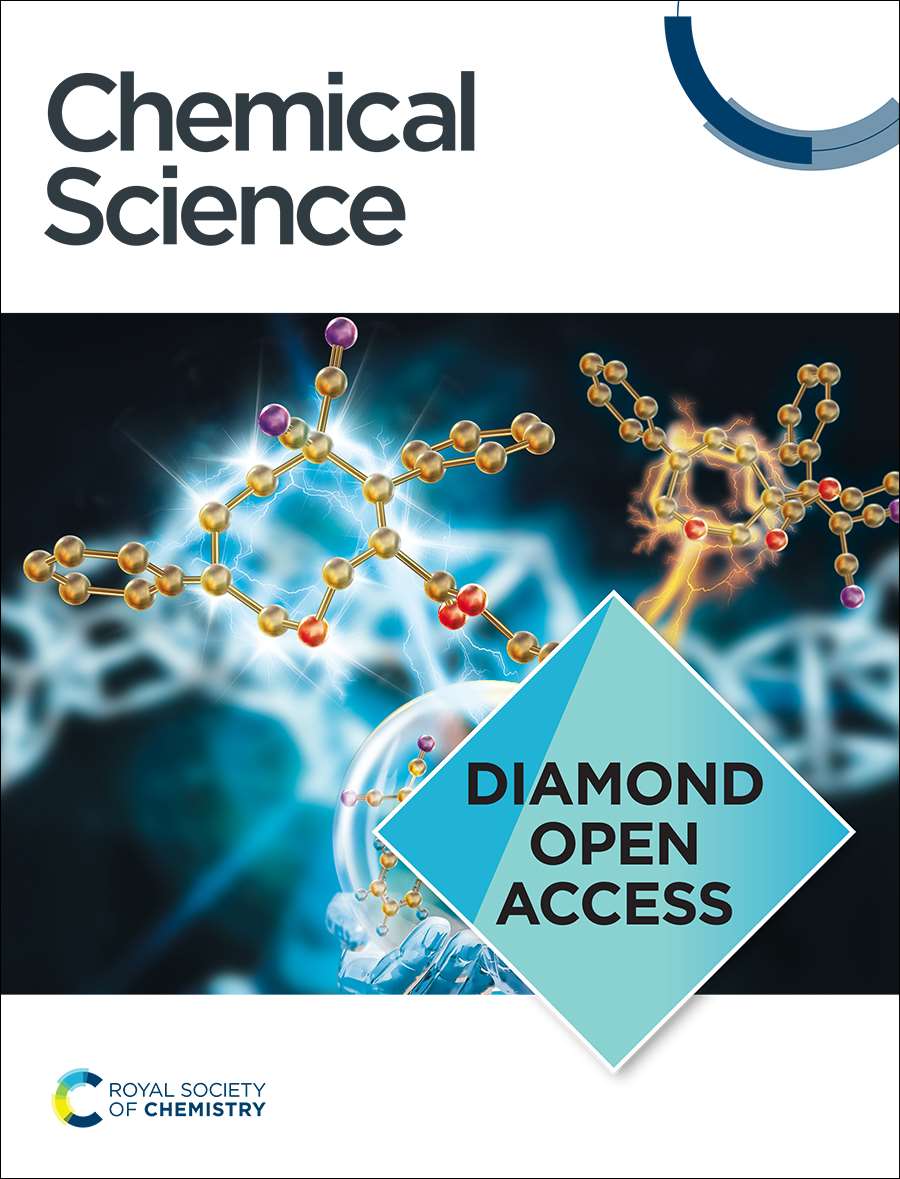Morphology of Lithium Halides in Tetrahydrofuran from Molecular Dynamics with Machine Learning Potentials
IF 7.6
1区 化学
Q1 CHEMISTRY, MULTIDISCIPLINARY
引用次数: 0
Abstract
The preferred structures of lithium halides (LiX, with X = Cl, Br, I) in organic solvents have been the subject of a wide scientific debate, and a large variety of forms has been isolated and characterized by X-ray diffraction. The identified molecular scaffolds for LiX are diverse, often built on (LiX)n rings with a prevalence of rhomboidal arrangements and an appropriate number of solvent or Lewis base molecules coordinating the lithium ions. Much less is known about the structures of LiX in solution, limiting the understanding of the synergistic role of LiX in reactions with various organometallic complexes, as prominently represented by the turbo Grignard reaction. Here, we trained a machine learning potential on ab initio data to explore the complex conformational landscape for systems comprising four LiX moieties in tetrahydrofuran (THF). For all the considered halogens a large number of scaffolds were found at thermally accessible free energy values, indicating that LiX in solution are a diverse ensemble constituted of (LiX)n moieties of various sizes, completed by the appropriate number of coordinating THF. LiCl shows a preference for compact, pseudo-cubane Li4Cl4(THF)4 structures, coexisting with open rings. At concentrations close to the solubility limit, LiCl forms hexagonal structures, in analogy with literature observations on pre-nucleating NaCl. LiBr tends to favour less compact, more solvated aggregates. LiI significantly differs from the two other cases, producing highly solvated, monomeric, dimeric, or linear structures. This study provides a comprehensive view of LiX in organic solvent, revealing dynamical polymorphism that is not easily observable experimentally.从分子动力学与机器学习势能看四氢呋喃中卤化锂的形态
卤化锂(LiX,X = Cl、Br、I)在有机溶剂中的优选结构一直是科学界广泛讨论的主题,通过 X 射线衍射法分离和表征了大量不同形式的卤化锂。已确定的 LiX 分子支架多种多样,通常建立在(LiX)n 环上,以斜方体排列为主,并有适当数量的溶剂或路易斯碱分子与锂离子配位。人们对溶液中 LiX 的结构知之甚少,这限制了人们对 LiX 在与各种有机金属配合物反应中的协同作用的了解,其中最突出的代表就是涡轮格氏反应。在此,我们在 ab initio 数据上训练了机器学习潜能,以探索在四氢呋喃(THF)中由四个 LiX 分子组成的体系的复杂构象景观。对于所有考虑过的卤素,在热自由能值上都发现了大量的支架,这表明溶液中的 LiX 是由不同大小的 (LiX)n 分子组成的多样化组合,并由适当数量的配位 THF 来完成。氯化锂显示出偏好紧凑的假立方体 Li4Cl4(THF)4 结构,并与开环共存。当浓度接近溶解度极限时,LiCl 会形成六边形结构,这与文献中对成核前 NaCl 的观察结果类似。LiBr 则倾向于较不紧凑、溶解度较高的聚集体。LiI 与其他两种情况明显不同,会产生高度溶解的单体、二聚体或线性结构。这项研究提供了有机溶剂中 LiX 的全貌,揭示了实验中不易观察到的动态多态性。
本文章由计算机程序翻译,如有差异,请以英文原文为准。
求助全文
约1分钟内获得全文
求助全文
来源期刊

Chemical Science
CHEMISTRY, MULTIDISCIPLINARY-
CiteScore
14.40
自引率
4.80%
发文量
1352
审稿时长
2.1 months
期刊介绍:
Chemical Science is a journal that encompasses various disciplines within the chemical sciences. Its scope includes publishing ground-breaking research with significant implications for its respective field, as well as appealing to a wider audience in related areas. To be considered for publication, articles must showcase innovative and original advances in their field of study and be presented in a manner that is understandable to scientists from diverse backgrounds. However, the journal generally does not publish highly specialized research.
 求助内容:
求助内容: 应助结果提醒方式:
应助结果提醒方式:


